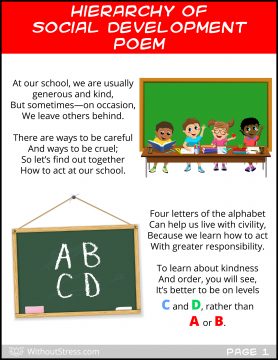QUESTION:
What is the best way to explain to children the difference between internal and external motivation––in other words, the difference between DWS Levels C and D? I am having trouble with this.
RESPONSE:
Initially I use very concrete examples connected directly to the classroom.
I describe Level C as the level where students do the right thing––what’s expected of them by the teacher––because the teacher is clearly expecting them to do it.
Some simple examples:
- The student will pick up toys off the floor when they are asked.
- The student will walk quietly in the hallway when a teacher is supervising.
- The student will clean up a mess he/she has made when







